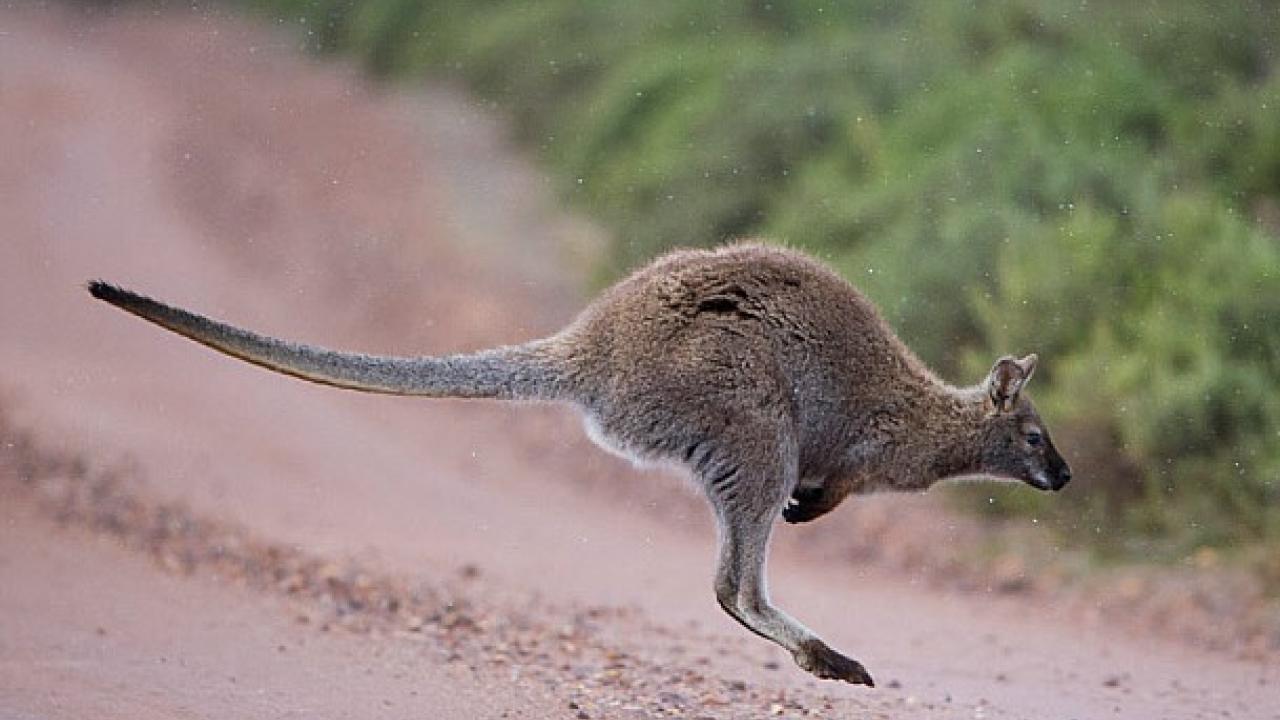Kangaroo mystery bounces back into the spotlight

You might never work out why a wallaby jumps out in front of your car or a pademelon pops across the lawn but researchers have gained new insights into why kangaroos, and all of Tasmania’s bounding marsupials, hop.
Hopping is a rarity among animals – most are happy to cruise on four legs.
So to find out what puts the spring in the step of kangaroos, Flinders University researchers have studied the musky rat-kangaroo (Hypsiprymnodon moschatus), a small marsupial that weighs only 500g but is the last living representative of its family – and it doesn’t hop.
Its lineage extends back to before kangaroos evolved their distinctive hopping gait so the species could unlock the mystery as to why kangaroos evolved differently to most animals and became the only hopping animals with a body mass greater than 5kg.
“The musky rat-kangaroo, as the most primitive living macropodoid (a group that includes kangaroos, wallabies, potoroos and bettongs), can offer insight into evolution within the group, including the origin of bipedal hopping locomotion,” co-lead author Amy Tschirn, a PhD student and researcher at Flinders University’s College of Science and Engineering, said.
“As the only living macropodoid that doesn’t hop, the musky rat-kangaroo provides a crucial insight into how and when the iconic hopping form of locomotion evolved in Australia.”
The study observed muskies in their native habitat in the Atherton Tableland, far-northern Queensland, to better understand how they move.
Adult musky rat-kangaroos were filmed in the wild, which showed they mostly use a "bound" or "half-bound" gait, characterised by the hindfeet moving together in synchrony.
No other marsupial that moves on all fours is known to use this distinctive style of movement to the same extent as muskies.
Observations also confirmed that musky rat-kangaroos are restricted to quadrupedal gaits even at very fast speeds.
“There remains no evidence of hopping in this species. Even when travelling at high speeds, muskies always use quadrupedal gaits, never rearing up on just their back legs,” Harvard’s Dr Peter Bishop, co-lead author of the research paper, said.
He said for some reason there was a shift from walking to bounding to hopping over time.
“Perhaps it started with an ancestor that moved about on all fours like other marsupials, then an animal that bounded like the muskies, and finally evolved into the iconic hopping kangaroos we see in Australia today,” he said.
The research – “Asymmetric gait in locomotion of Hypsiprymnodon moschatus, the most primitive extant macropodoid marsupial’, by Peter Bishop, Amy Tschirn, Aaron Camens and Gavin Prideaux – has been published in Australian Mammalogy.
While the evolution of kangaroo movement is yet to be solved, or an explanation of why hopping kangaroos got so much bigger than rodents, the researchers say future studies will be informed by key fossil discoveries from early periods in kangaroo evolution.
As for why kangaroos hop, previous research has measured the red kangaroo motoring along at average speeds of 24 to 32 kph and a single hop can propel it 7.6 meters and bounce it up to 1.8m high.
Kangaroo hopping ranks among the most energy efficient means of land travel in the animal kingdom - so as an escape plan, it's not a bad thing.




Add new comment